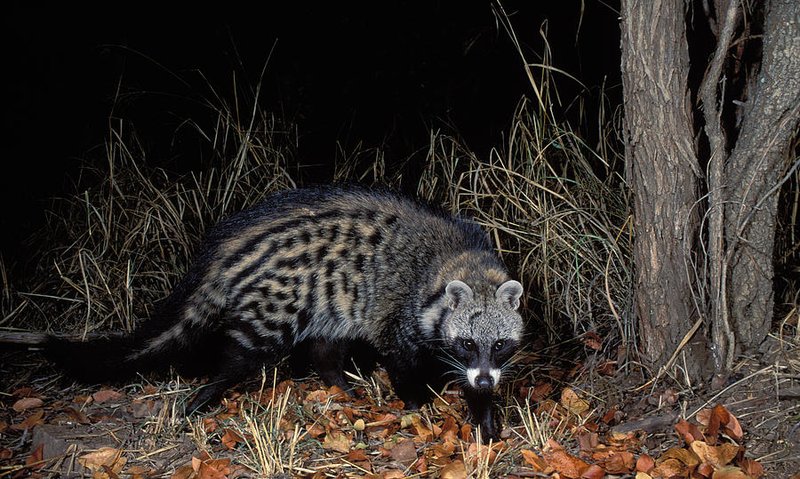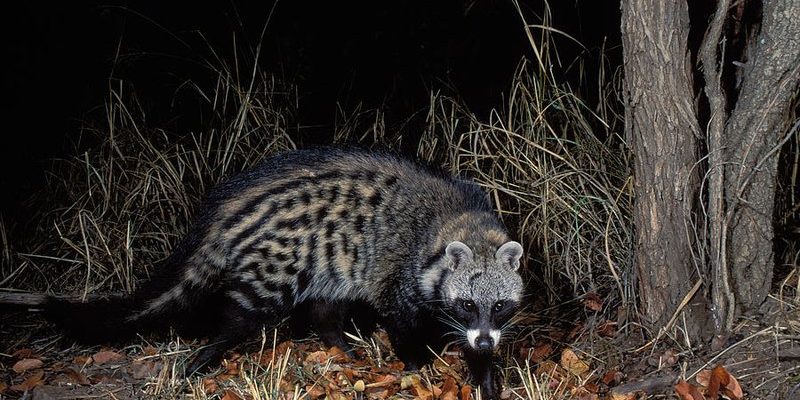
Civets are intriguing creatures that might not be on everyone’s radar, but they hold a special place in the animal kingdom. They resemble a mix between a cat and a weasel, with a unique charm of their own. These nocturnal animals are primarily found in tropical regions, making them a fascinating subject of study for wildlife enthusiasts. If you’ve ever wondered what makes these animals tick, you’re in the right place!
Imagine a small creature with a long body, a bushy tail, and a distinctive cat-like face. That’s the civet for you! They are known for their curious and solitary nature. While they may look cute and cuddly, civets have some surprising traits and behaviors that set them apart from your average pet. Let’s dive into the world of civets and explore what makes them so unique!
What is a Civet?
A civet is a small to medium-sized mammal belonging to the family Viverridae. These animals are originally native to Africa and Asia, and they come in several species, each with unique characteristics. Civets are known for their distinctive markings, which can include stripes, spots, or a combination of both, depending on the species.
One of the most well-known members of the civet family is the African civet, which is famous for its striking appearance. Civets are primarily nocturnal, meaning they are most active during the night. They have adapted to their environments in fascinating ways, using their keen sense of smell to navigate and hunt for food.
Interestingly, civets are also known for their role in coffee production. Yes, that’s right! The beans used to create the luxurious Kopi Luwak coffee are eaten and subsequently excreted by civets. This unique process has sparked much interest and debate around the ethics of civet coffee production.
Civet Habitat
Civets thrive in various habitats, primarily in tropical rainforests, savannas, and even mountainous regions. They prefer areas with dense cover, as this provides them with protection from predators and a suitable space to hunt. These animals are incredibly adaptable and can be found in both rural and urban environments. However, their populations are at risk due to habitat destruction and hunting.
In forests, civets typically find shelter in hollowed-out trees or dense underbrush. This allows them to remain hidden from both predators and potential threats. Here’s an interesting fact: civets are excellent climbers! They often take to the trees for added safety and to hunt insects or small birds.
While civets are primarily found in regions like Southeast Asia and sub-Saharan Africa, their adaptability allows them to survive in a range of conditions. However, as human expansion encroaches on their habitats, conservation efforts are crucial to ensuring these fascinating creatures continue to thrive. It’s essential to understand their habitats if we aim to protect them.
Civet Diet and Feeding Habits
Civets are omnivorous, which means they have a diverse diet that includes fruits, insects, small mammals, and even birds. They are particularly fond of ripe fruits and will often seek out sources of food in trees or on the ground. Their ability to adapt their diet to whatever is available in their environment is one of the reasons they can survive in various habitats.
Interestingly, civets have a great sense of smell, which they use to locate their food. They tend to be opportunistic feeders, taking advantage of whatever they find. For example, during the fruiting season, you might see them feasting on figs or other seasonal fruits. Additionally, they play a crucial role in their ecosystems by helping to spread seeds through their droppings.
Feeding behavior is often solitary, but civets may come together to feed if food is plentiful. They have sharp claws that help them climb trees to forage for food, making them incredibly resourceful. If you ever find yourself in an area where civets are known to roam, keep an eye out for signs of their feeding, like claw marks on trees or remnants of fruit on the ground.
Physical Characteristics of Civets
Civets come in various shapes and sizes, but they typically have a long body with a rounded head and large eyes, which give them excellent night vision. Their fur can range from gray to brown, often adorned with distinctive spots or stripes that help them blend into their surroundings. The African civet, for example, boasts a striking pattern of black spots on a creamy background, making it quite a sight!
Adult civets can weigh anywhere from 5 to 15 pounds, depending on the species. Their long tails can be almost as long as their bodies, adding to their agile appearance. This tail helps them maintain balance when climbing trees and navigating their rugged environments.
Another notable feature is the civet’s scent glands, located near the base of the tail. These glands produce a strong-smelling substance that civets use to mark their territory. The musky scent is often used in perfumes and can be quite pungent—definitely not your typical aromatic choice!
Civets and Their Role in Ecosystems
Civets play an essential role in maintaining balance within their ecosystems. As omnivores, they help control insect populations while also aiding in seed dispersal. When civets consume fruits, they pass the seeds in their droppings, often far from the original plant. This process promotes forest regeneration and biodiversity.
Due to their foraging habits, civets also help transport nutrients through their droppings, enriching the soil and supporting plant growth. By spreading seeds and helping plants grow, civets contribute significantly to the health of their habitats.
However, like many wildlife species, civets face threats from habitat loss and hunting. As their populations decline, the ecosystems they inhabit may struggle to maintain the same balance, leading to negative consequences for other species as well. Protecting civets ultimately supports the health of the entire ecosystem.
Civet Reproduction
Civets have a relatively low reproductive rate, which is another reason their populations can be vulnerable. Most species are solitary, coming together only to mate. After a gestation period of about 60 to 70 days, the female gives birth to a small litter—typically 2 to 4 cubs. Unlike many mammals, the mother civet provides extensive care, keeping her young safe and teaching them how to hunt.
Baby civets are born blind and helpless, relying heavily on their mother for food and protection during their early months. As they grow, they start to explore their surroundings and learn important survival skills. Civet cubs remain with their mother for several months before venturing out on their own, which enhances their chances of survival in the wild.
This nurturing side of civets showcases their unique social behavior, even if they typically prefer solitude. Investing in their young is essential for the continuation of their species, reminding us of the delicate balance of nature.
Conservation Status of Civets
Many civet species are experiencing declining populations due to habitat loss, hunting, and illegal wildlife trade. The International Union for Conservation of Nature (IUCN) lists several civet species as vulnerable or endangered. Deforestation, driven by agriculture and urban expansion, poses a significant threat to their habitats.
In some regions, civets are hunted for their meat, and the demand for civet coffee has led to the capture of wild civets and their confinement in poor conditions. These practices raise ethical concerns and highlight the need for responsible consumption. Conservation efforts are critical to protect these remarkable animals and their ecosystems.
Organizations around the world are working to promote awareness about civets and their plight. By educating communities on the importance of preserving wildlife and their habitats, we can foster a better future for civets and other endangered species. Supporting wildlife protection and responsible tourism can also help create a more sustainable balance between human activities and wildlife conservation.
Interesting Facts About Civets
| Species | African Civet |
| Habitat | Tropical rainforests, savannas |
| Diet | Omnivorous (fruits, insects, small mammals) |
| Size | Approximately 1.5 to 3 feet long |
| Lifespan | 5 to 15 years in the wild |
| Activity | Nocturnal |
Civets are more than just cute, cat-like creatures. Their unique adaptations, fascinating behaviors, and ecological importance make them a vital part of their environments. Understanding civets and their contributions to biodiversity is crucial for their conservation. As we continue to explore the wonders of wildlife, let’s remember that protecting these extraordinary animals benefits the health of our planet.
The next time you sip a cup of coffee, think of the civets that play a role in its production. These creatures remind us of the intricate connections in nature and the importance of preserving our wildlife for future generations. By respecting and protecting civets, we can help maintain the balance of ecosystems and support overall biodiversity.
FAQ
What do civets sound like?
Civets can produce a variety of sounds, including growls, hisses, and chirps. Their vocalizations can be quite peculiar, especially during mating season when they are more active and vocal. If you hear strange noises in the night, it might just be a civet communicating!
Are civets dangerous to humans?
Generally, civets are not dangerous to humans. They tend to be shy and avoid confrontation. However, like any wild animal, they can defend themselves if they feel threatened. It’s best to observe civets from a distance and respect their space.
Can civets be kept as pets?
Civets are not recommended as pets. They have specific dietary and environmental needs that can be challenging to meet in a domestic setting. Additionally, owning a civet may be illegal in some areas due to wildlife protection laws.
What is the lifespan of a civet?
The lifespan of a civet can vary by species, but in the wild, they typically live between 5 and 15 years. In captivity, with proper care, they may live longer. However, their natural habitats provide the best chance for a full and healthy life.
How do civets hunt for food?
Civets are opportunistic hunters, using their keen sense of smell and sharp eyesight to locate prey. They climb trees to find fruits or hunt insects and small mammals on the ground. Their adaptable eating habits allow them to thrive in various environments.
Why are civets important for ecosystems?
Civets play a crucial role in ecosystems by helping control insect populations and dispersing seeds. As they consume fruits and excrete seeds, they contribute to plant growth and forest regeneration, supporting overall biodiversity.
What threats do civets face?
Civets face several threats, including habitat destruction, hunting, and the illegal wildlife trade. Deforestation for agriculture and urban development poses significant risks to their populations. Conservation efforts are essential to counter these challenges and protect civets.
Are civets solitary animals?
Yes, civets are primarily solitary creatures, coming together only for mating. They establish territories and mark them using their scent, which helps minimize conflicts with other civets. Their solitary nature allows them to be more adaptable in their habitats.
What do civets eat in the wild?
Civets are omnivorous and have a varied diet that includes fruits, insects, small mammals, and sometimes birds. They particularly enjoy ripe fruits, making them essential for seed dispersal in their ecosystems.
How can I help conserve civets?
You can help conserve civets by supporting wildlife protection organizations, spreading awareness about their plight, and being mindful of your consumption choices—especially regarding products like civet coffee. Every action counts!

